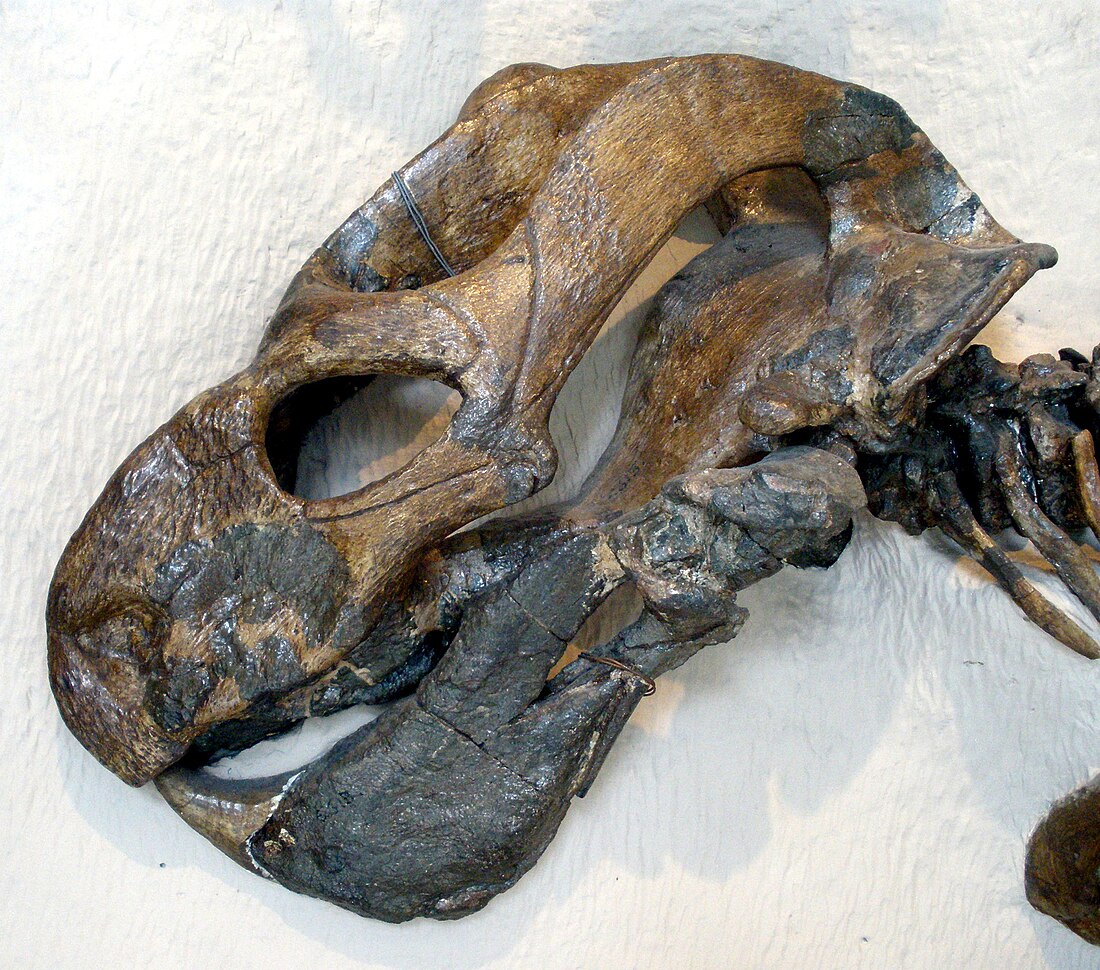Dicynodont
extinct clade of dicynodonts (Dicynodontia) From Wikipedia, the free encyclopedia
The Dicynodontia are extinct animals called therapsids. They were herbivorous (plant-eating) animals with two tusks; 'dicynodont' means 'two dog tooth'. They were the most successful and diverse of the non-mammalian therapsids, with over 70 genera (types) known.
| Dicynodonts | |
|---|---|
 | |
| Endothiodon, a Permian dicynodont | |
Fossil | |
| Scientific classification | |
| Kingdom: | |
| Phylum: | |
| Class: | |
| Order: | |
| Suborder: | Anomodontia |
| Infraorder: | Dicynodontia Owen, 1859 |

All of them had the same basic body plan. They were built like small tanks, with sturdy legs at each corner. They were not fast movers, but were obviously strong and lived in groups as many plant-eaters do today.[1] Their body shape was similar to certain types of modern mammals such as pigs and rhinoceros.
Fossils discovered in Poland show that dicynodonts survived at least until about 200 million years ago (the Upper Triassic period.[2] Six fragments of fossil skull bone discovered in Australia (Queensland) may indicate that dicynodonts survived much longer, until about 150 million years ago (the Cretaceous period) in the region called the southern Gondwana.[3]
The dicynodonts were a group of therapsids, but were not ancestors to the mammals. The group which evolved into mammals was the cynodonts.
References
Wikiwand - on
Seamless Wikipedia browsing. On steroids.
